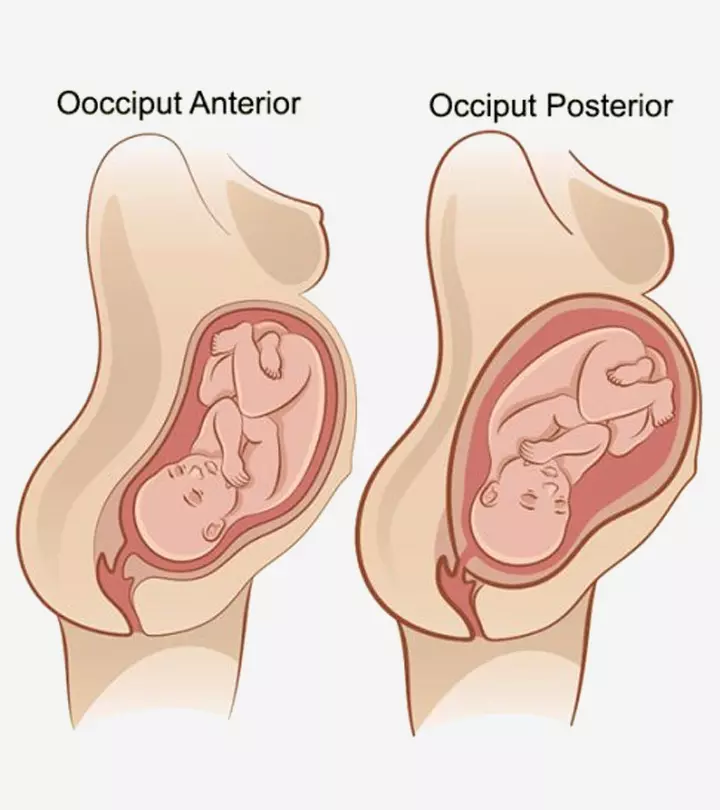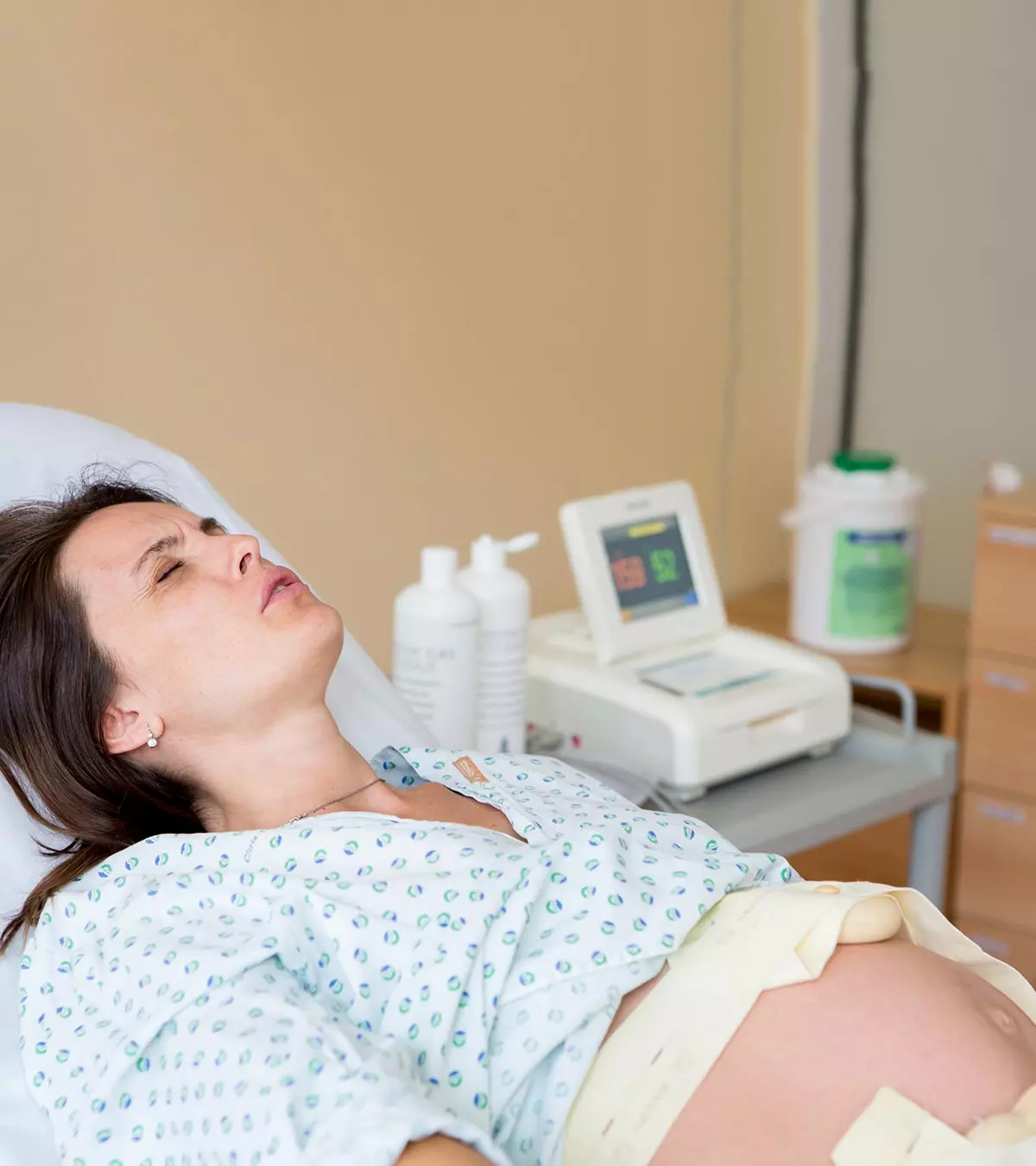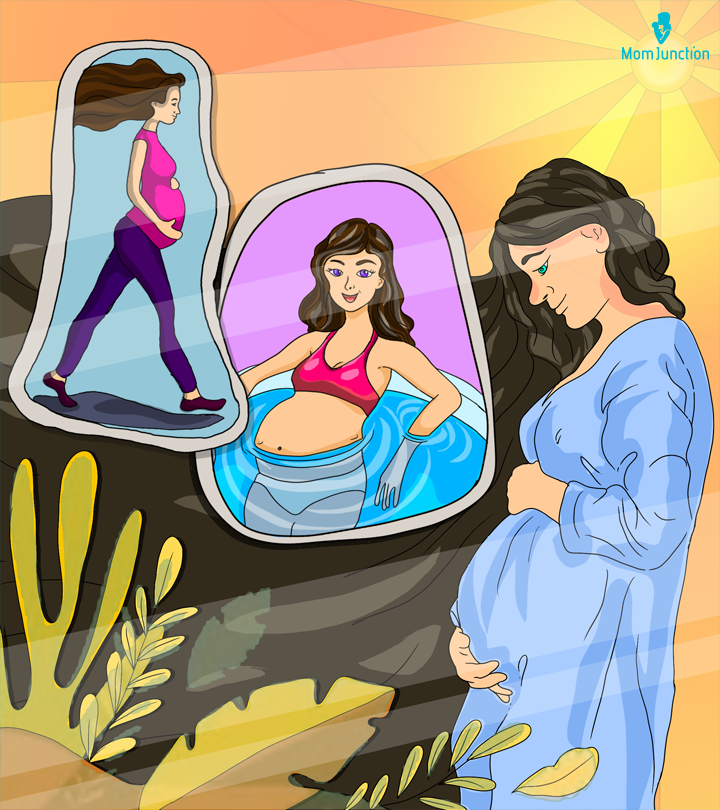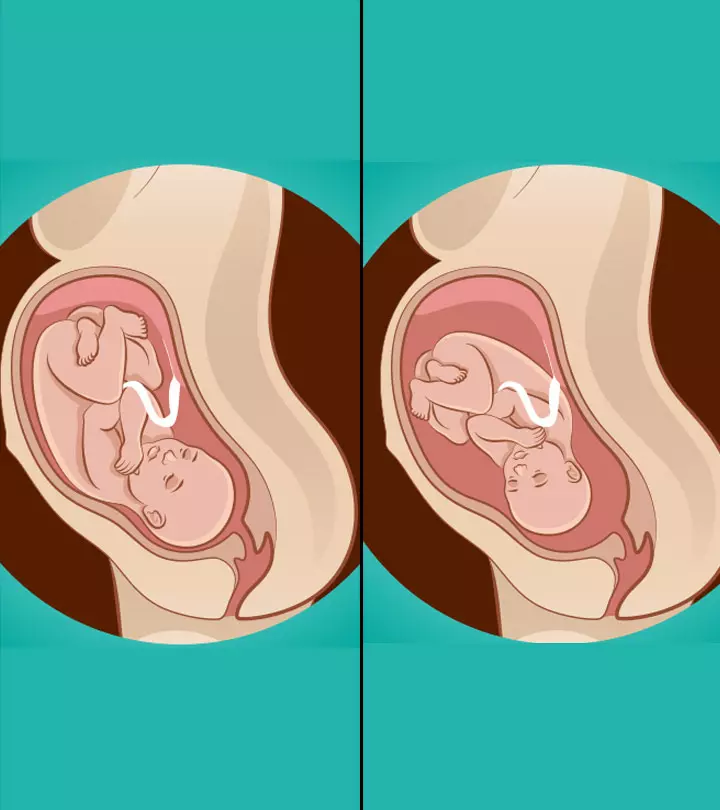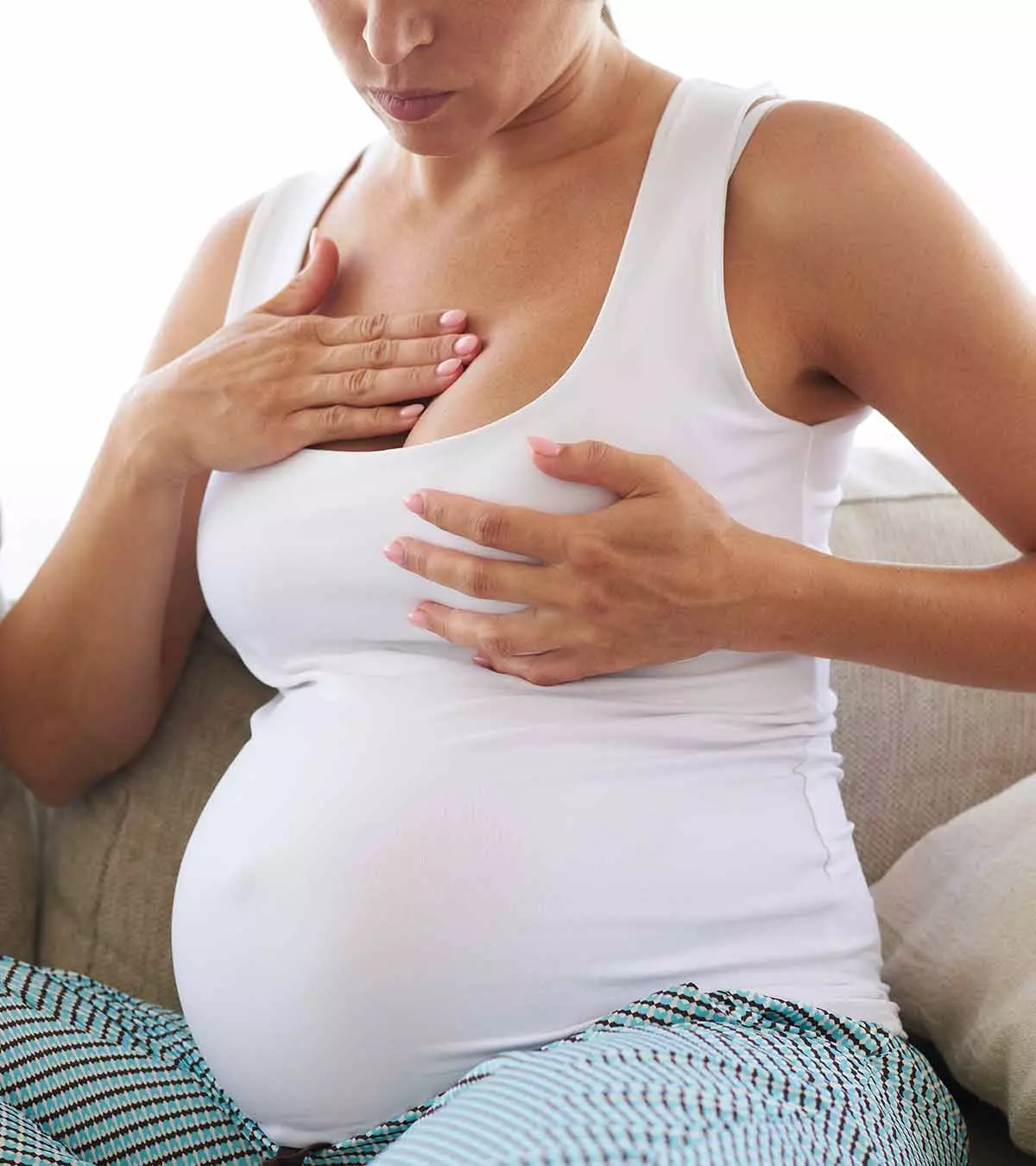
Image: Shutterstock
Nipple stimulation to induce labor is a natural induction technique often recommended to stimulate uterine contractionsiPeriodic and timed tightening of the uterine muscles during labor, facilitating the childbirth process. during the labor process. Most mothers may look for natural ways to induce labor after crossing the expected due date and may consider nipple stimulation as an option. Stimulating the nipples releases oxytocin hormone that also aids in uterine contractions. However, there is no accurate way to measure the effectiveness of this technique. Read on to know more about the safety and effectiveness of nipple stimulation to induce labor.

Key Pointers
- Nipple stimulation may help induce labor in an uncomplicated pregnancy by increasing the release of oxytocin, a hormone that stimulates uterine contractions.
- Nipples may be stimulated manually using fingers or a breast pump.
- It’s important to check with your doctor before trying any labor-inducing technique at home.
Is It Safe To Induce Labor At Home?

It is safe to induce labor at home as long as you don’t try it until you are due. Since the effectiveness of these techniques is known only through anecdotal evidence, check with your doctor before trying it to ensure optimum prenatal care. The results also depend on your medical history and current health status. In general, natural induction at home is not suggested in any pregnancy as some risk factors do not become apparent till labor actually starts. However, should you still wish to do so, consider having a professional midwife or doula supervising and assisting you when you try labor induction at home (1).
Can Nipple Stimulation Bring On Labor?
Nipple stimulation may help induce labor provided there have been no complications during the pregnancy. Oxytocin plays a crucial role in initiating labor by triggering uterine contractions. Stimulation of the nipples releases this hormone and promotes contractions to aid the baby’s movement down the birth canal (2).
Amy Kiefer, a mother of three, recounts her experience using nipple stimulation to initiate labor when her obstetrician projected another week’s delay. She explained, “This time around I had done research on natural methods of inducing labor. That weekend, I pulled my breast pump out of the closet, sterilized my nipple shields, plopped them on, and sat down to pump for a couple of hours while watching a movie. Coincidentally or not—I’ll never really know—I went into labor two days later and delivered right on my due date (i)”
Here is some evidence that shows nipple stimulation works, but only in low-risk pregnancies.
- In a randomized controlled experiment at a state hospital in Turkey (2015), phases of labor were shorter with nipple stimulation. The average duration of childbirth was 3.8 hours (first phase), 16 minutes (second phase) and 5 minutes (third phase) after nipple stimulation, which was lower when compared to control group’s average of 6.8hr, 27min, and 6min respectively. Also, this method supported vaginal delivery (3).
- In a 2012 study conducted on first-time and low-risk pregnancies, women at 38 weeks of gestation were advised to massage their breasts thrice a day, for 15 to 20 minutes. They delivered the baby at 39.2 weeks when compared to the control group at 39.5 weeks. Also, the chances of cesarean section were low (4).
- Sixteen low-risk pregnant women between 38 and 40 weeks of gestation were asked to try nipple stimulation for three days, one hour a day. Their saliva was tested for oxytocin levels. On the third day, the oxytocin levels were high, and six women went into labor (5).
While nipple stimulation might be acceptable for low-risk pregnancies, there is a lack of scientific research on its effectiveness in high-risk pregnancies.
 Did you know?
Did you know?How Does Nipple Stimulation Work?
Nipple stimulation mimics breastfeeding and causes the sensory cells of the nipples to stimulate the brain to release oxytocin. Rolling or rubbing the nipples releases oxytocin that initiates labor by causing uterine contractions (6).
How To Perform Nipple Stimulation?
Note that nipple stimulation to induce labor is safe only for normal, full-term and low-risk pregnancies. Also, it should be performed only if your obstetrician considers it safe for you (7).
- Choose the method: You may stimulate the nipples manually with your fingers or use a breast pump. Or your partner or a nursing baby can orally stimulate the nipples by suckling them.
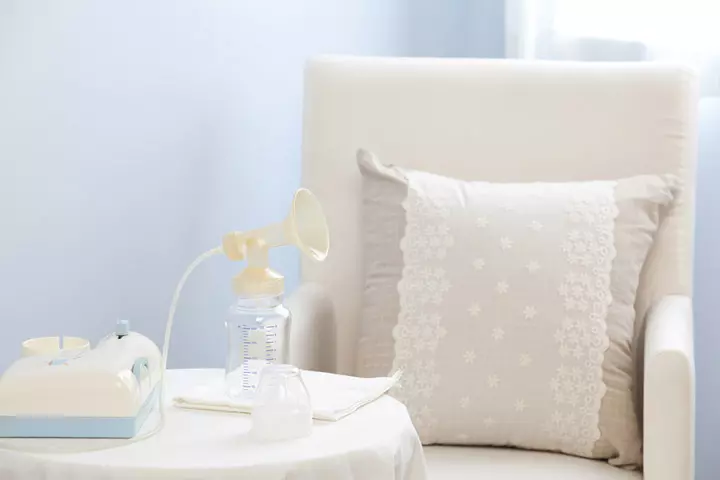
- Massage the areola: Hold the nipples, focusing more on the areola (the dark area around the nipple), in between your thumb and forefinger and gently massage the area. Nipples consist of nerve endings that stimulate the release of the hormone.
- Repeat with another breast: Wait for two to four minutes before starting with another breast. Spend 15 minutes stimulating one, and then switch to another. Continue the stimulation for one hour and repeat it thrice a day.
- Perform with caution: The aim is to initiate labor, but not to rush heavy contractions. If you have a contraction, refrain from massaging and wait for it to stop.
If your nipples become sore or tender, apply coconut oil, breast milk, or natural butter to ease the discomfort. Pay attention to how your body responds, and consult a healthcare provider if you notice any unusual symptoms.
What Are The Other Techniques For Inducing Labor?
Many other methods exist for natural labor induction. They can also be tried along with nipple stimulation, provided you are near full-term and your doctor approves of them (8).
- Walking, especially long walks, can stimulate the release of oxytocin and pressure the baby to move down the pelvis. However, do not power walk as it can drain all your energy. A gentle stroll is enough to encourage labor.
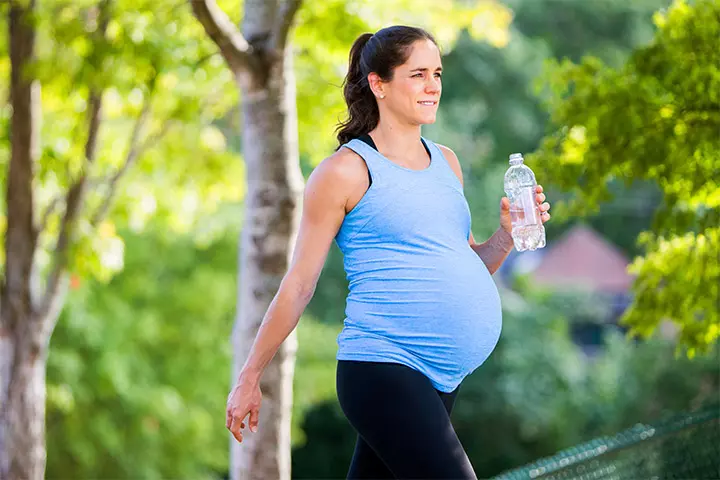
- Although there aren’t any studies to support this, some have found that sexual intercourse can release oxytocin to speed up the labor. Refrain from having sex in certain cases, such as placenta previaiA pregnancy complication where the placenta grows around the cervix, blocking it partially or completely. , suspected rupture of membranes, as it can lead to complications.
- It is an age-old belief that castor oil can stimulate uterine contractions. However, it may result in diarrhea due to its natural laxative properties (9). or could lead to uncontrolled strong contractions.
- Herbs such as raspberry tea leaf, evening primrose oil, and black cohosh help initiate labor. Although they might be effective, there is no evidence suggesting they are safe to use (10).
- Pineapple has an enzyme called bromelain that stimulates labor by softening the cervix. Studies on pregnant women with a gestational age of 40–41 weeks indicate that consumption of pineapple before labor aids in labor progression and reduces the quantity of oxytocin intervention (17). Some other tropical fruits including papaya, mango and kiwi also show the same property. But there are no proper studies to support this theory (11).
- According to old wives’ tales, eating spicy foods can stimulate labor. It is believed that spices could upset the tummy and lead to uterine contractions in the womb. However, this might not be the best thing to do as excessively spicy food could lead to indigestion or heartburn.
- Alternative therapies such as acupuncture during pregnancy can stimulate the release of oxytocin. However, this should be done only by a trained professional. Even if it does not bring labor, acupuncture may at least reduce the discomfort and pain associated with labor.
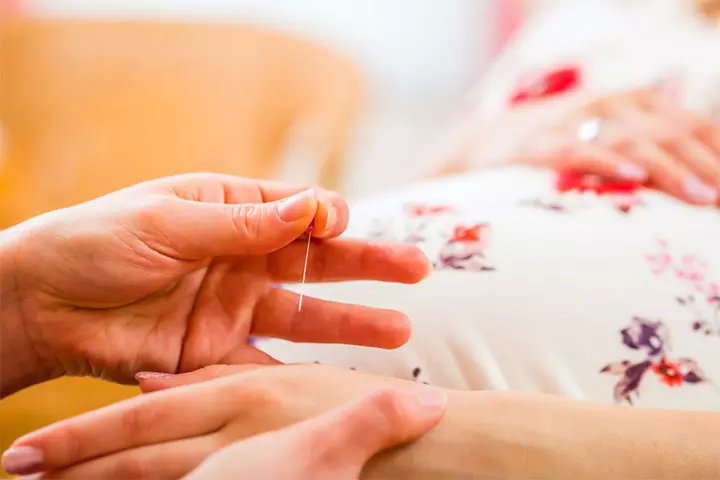
- Having a warm, relaxing bath or soaking in a bathtub filled with warm water may stimulate uterine contractions. It has a positive effect on your emotions by removing your fear and anxiety about labor. Make sure the water is warm and not hot (12).
 Point to consider
Point to considerMost of these labor induction techniques are folklore and not supported by scientific studies. So it is always best to check with your doctor before trying any of them.
When Should You See A Doctor?

In the initial stages of labor, the contractions are dull with a little discomfort. When you try any of the above methods, observe the contractions and try to time them.
Ideally, the contractions should last about 40 to 60 seconds and repeat two to three times in ten minutes (13). If you feel the contractions are stronger and last longer, feel the baby dropping lower into the pelvic region, or the mucus plug loosening, consult your doctor, midwife, or doula.
You may use nipple stimulation to induce labor in an uncomplicated full-term pregnancy. It needs to be performed cautiously using stimulation by hand or a breast pump to help release oxytocin. This hormone is responsible for inducing labor. Consuming pineapples, raspberry tea, or spicy food are said to aid labor onset but has no scientific evidence supporting its effectiveness. However, it is best to talk to a doctor or maternity expert before attempting to start uterine contractions. Further, have patience, take care of yourself, and avoid anxiety even if you are in the 40th week.
Infographic: Common Myths And Facts About Inducing Labor
You may probably be tired, uncomfortable, and set for your baby to come out at the end of your pregnancy. Although there are several folklores about how to start labor that might not hurt, they are not helpful either. These misconceptions are to be debunked. Check this infographic to learn some common myths associated with labor induction and save it for a fact check.
Some thing wrong with infographic shortcode. please verify shortcode syntax
Frequently Asked Questions
1. Can nipple stimulation cause fetal distress?
Some women may experience prolonged and severe contractions after performing this procedure, which may cause distress and harm to the fetus. Hence, some experts do not suggest performing nipple stimulation to induce labor (14).
2. Should I avoid nipple stimulation during pregnancy?
You may refrain from doing this practice if you have any pregnancy-related complications or are considered to be in the “high-risk pregnancy” category (4).
3. Can nipple stimulation induce labor at 37 weeks?
One research study performed on low-risk pregnant women demonstrated that nipple stimulation might induce labor in women after 37 weeks (38 to 40 weeks) (5). However, more extensive studies are needed to prove the validity of this intervention.
4. Can nipple stimulation cause false labor?
In some women, nipple stimulation could induce contractions, indicating false labor (14).
5. Does nipple stimulation ripen the cervix?
As per a study, nipple stimulation leads to the release of the hormone oxytocin, which might aid in cervical ripening in low-risk women (4).
Illustration: Can Nipple Stimulation Induce Labor And How To Perform It?

Image: Dall·E/MomJunction Design Team
Expectant mums may also use nipple stimulation to start labor when absolutely necessary. Discover the simple steps to get your body ready for birth with this video.
Personal Experience: Source
MomJunction articles include first-hand experiences to provide you with better insights through real-life narratives. Here are the sources of personal accounts referenced in this article.
i. Trying to bring on labor? Forget sex and spicy foods. Only nipple stimulation works.https://caheo.info/2014/09/17/forget-sex-and-spicy-foods-of-natural-methods-to-induce-labor-only-nipple-stimulation-works/
References
1. Katy BackesKozhimanil et al.; Use of non-medical methods of labor induction and pain management among U.S. women; Birth (2013)
2. Oxytocin For Induction; American Congress of Obstetricians & Gynecologists (ACOG) (2011)
3. GulbahtiyarDemirel and Handan Guler; The Effect of Uterine and Nipple Stimulation on Induction With Oxytocin and the Labor Process; Sigma Theta Tau International Honor Society of Nursing (2015)
4. Nilanchali Singh et al.; Breast Stimulation in Low-Risk Primigravidas at Term: Does It Aid in Spontaneous Onset of Labour and Vaginal Delivery? A Pilot Study; Biomed Res Int (2014)
5. Kaori Takahata et al.; Effects of breast stimulation for spontaneous onset of labor on salivary oxytocin levels in low-risk pregnant women: A feasibility study; PLOS (2018)
6. Megan J. Lewis; An Investigation of the Effects of Pitocin for Labor Induction and Augmentation on Breastfeeding Success; Claremont Colleges Scholarship @ Claremont (2012)
7. Elaine Stillerman; Prenatal Massage – E-Book: A Textbook of Pregnancy, Labor, and Postpartum Bodywork; Page 272
8. Fact Or Folklore: 7 Old Wives’ Tales On How To Induce Labor Naturally; Vital Record, News from the Texas A&M University Health Science Center (2016)
9. Neri I et al.; Castor oil for induction of labour: a retrospective study; J Matern Fetal Neonatal Med (2018)
10. Collins Zamawe et al.; Effectiveness and safety of herbal medicines for induction of labour: a systematic review and meta-analysis; BMJ Open (2018)
11. Suzannah Smith; FACT OR FOLKLORE: 7 OLD WIVES’ TALES ON HOW TO INDUCE LABOR NATURALLY; News from Texas A&M Health (2016)
12. E. R. Cluett and E. Burns; Immersion in water in labour and birth; Cochrane Database Syst Rev (2014)
13. Labour and Delivery Care; Health Education and Training HEAT in Africa, The Open University
14. The truth about “natural” ways to induce labor; The University of Texas Southwestern Medical Center.
15. Parvin Abedi et al.; Breastfeeding or nipple stimulation for reducing postpartum haemorrhage in the third stage of labour; NCBI (2016)
16. O Al-Kuran et al.; The effect of late pregnancy consumption of date fruit on labour and delivery; NCBI (2011)
17. Sedigheh Shariat Moghani et al.; Investigating the effect of edible pineapple on the ripening of the cervix and the onset of labor; Springer Science and Business Media LLC (2025)
Community Experiences
Join the conversation and become a part of our nurturing community! Share your stories, experiences, and insights to connect with fellow parents.
Read full bio of Dr. Anita Gondy
Read full bio of Rebecca Malachi
Read full bio of Dr. Ritika Shah
Read full bio of Reshmi Das







